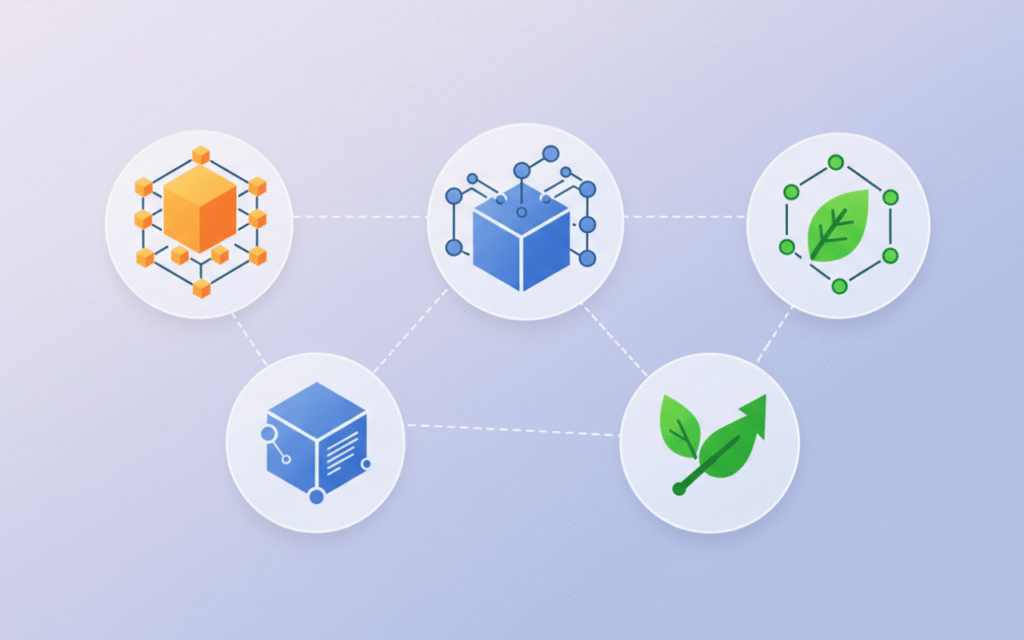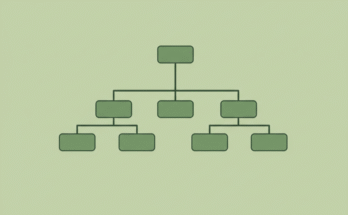Top blockchain trends of 2025 are already having an effect. We are witnessing new AI integrations, stablecoins, interoperability and the tokenization of real world assets (RWA). Blockchains provide many uses in finance, supply chain management, art collecting and healthcare data handling. Be sure to stay ahead of the game by keeping abreast of cryptocurrency developments.

1. Smart Contracts
Smart contracts are self-executing programs that run on a blockchain network and remove intermediaries to help reduce costs and fraud. Automatic agreements can also be programmed to automatically execute according to specific terms and conditions, providing transparency, accountability, and trust.
Projects such as SunContract enable peer-to-peer electricity trading between producers and consumers on the blockchain platform, bypassing utility intermediaries while saving on costs while contributing towards sustainability initiatives through renewable energy use, this trend should become prominent by 2025.
2. Interoperability
Interoperability is one of the key trends within blockchain that offers tremendous promise, connecting different blockchain networks in order to make them more practical and efficient. Integrating enterprise systems and creating AI-enhanced contracts that respond to real world data. Such smart contracts could make supply chain deals more flexible or even adjust insurance policies based on changing risk profiles.
Interoperability allows dApps to migrate between various blockchain networks, thus opening up access to a larger user base and increasing liquidity. Oracles help make this possible by connecting blockchain networks with external information sources.
3. NFTs
Non-fungible tokens (NFTs) are blockchain-based digital representations of exclusive assets, such as unique artwork or limited edition prints. NFTs help reduce fraud by verifying ownership. Only original pieces may be sold or transferred using these NFTs.
NFTs also hold promise in digitizing personal documentation, such as birth certificates, licenses and medical records with unique codes that cannot be altered, potentially eliminating escrow services and curbing fraudulent sales of high-end physical collectibles.
4. Tokenization of Real-World Assets
Real world assets such as property titles, commodities, stocks and bonds can be tokenized and represented on blockchain networks to make them more easily accessible and transferrable among users. Sports trading cards have recently been digitalized as non-fungible tokens (NFTs), making them more secure and enabling easier transfer between users.
NFTs are also being increasingly employed to digitalize votes during democratic elections, using blockchain’s virtual incorruptibility and transparency to combat any attempts at fraud and increase voting integrity. This trend should continue throughout 2025 and should be one of the top blockchain trends to keep an eye on.
5. AI
Artificial intelligence (AI) can make blockchain systems more efficient and secure by detecting security threats through monitoring smart contracts in real-time, as well as analyzing transaction patterns to detect anomalies.
AI can also be utilized to verify data on blockchain networks, providing businesses with trust and scalability in their products. AI analysis of blockchain data may be utilized to spot fraud or verify digital assets’ authenticity, helping reduce hacks, identity theft and provide personalized experiences.
6. Decentralization
Decentralization refers to the distribution of decision making and administrative authority among geographically dispersed entities, with blockchain providing faster and more effective communication among stakeholders in this process.
Companies such as Kaleido are using blockchain technology in the public sector to streamline operations, reduce risks and enhance transparency, potentially revolutionizing areas like public health, education and customs administration.
Media companies are turning to blockchain in order to increase transparency, combat piracy and ensure royalty payments. Systems like Swear can assist media companies in this regard as it verifies digital content using blockchain verification.
7. Security
At a time of increased investor demand for digital assets, blockchain networks are increasing security while meeting investor expectations for these digital assets. Stablecoins such as USDC are becoming popular as fiat-pegged alternatives to cryptocurrency volatility, energy-efficient mining solutions reduce carbon footprints, while cybersecurity integrations enhance transaction integrity and protect against quantum computing attacks.
Blockchains offer end-to-end traceability of food products, which will facilitate ethical sourcing, reduce fraud and counterfeiting, increase efficiency in supply chains and potentially save lives. Healthcare organizations could even utilize them to record tamper-proof medical information that could save lives.
8. Transparency
Blockchain’s advantages extend well beyond cryptocurrency. The technology can also enhance transparency for supply chains, identity systems and food safety programs. Blockchain-powered smart contracts, for instance, can be programmed to adapt as they learn about real world conditions, for instance shipping delays could trigger them to automatically adjust terms accordingly or even make decisions autonomously, which are examples of intelligent blockchain applications which will revolutionize business in 2025. Other examples are DeFi projects, stablecoin acceleration and DAO governance beyond simple token voting.
9. Sustainability
Companies increasingly recognize sustainability as an essential consideration when making investment and purchase decisions, and blockchain networks can assist companies with this endeavor by offering transparency and trust across supply chains, tracking carbon emissions and allowing peer-to-peer energy trading.
Green blockchain initiatives are expanding, using Proof-of-Stake algorithms to lower energy usage. Furthermore, blockchain technology enables sustainable and ethical sourcing with improved traceability and product inspections, as well as recording and trading carbon credits, recording corporate social responsibility programs (CSR) contributions on it. As well as creating more transparent real estate transactions with less fraud involved.
10. Scalability
Blockchains could one day help businesses leverage economies of scale. Such economies of scale allow companies to produce more products with fewer resources and labor input, thereby decreasing unit production costs per unit produced.
Supply chains could benefit from blockchain technology by improving traceability and transparency, this may assist with ethical sourcing efforts or prevent counterfeit products. Blockchains could also improve governance structures by empowering stakeholders to vote and influence decisions more easily. One such blockchain-based platform, Healthcoin, for instance, seeks to manage and reward Type-2 diabetes prevention using digital tokens.


![[Blockchain Beyond Cryptocurrency] The Untapped Potential Across Industries](https://mineatech.com/wp-content/uploads/2025/08/blockchain-beyond-cryptocurrency-the-untapped-potential-across-industries-348x215.png)
![What Is a Blockchain Consensus Algorithm? [Explained Simply]](https://mineatech.com/wp-content/uploads/2025/08/what-is-a-blockchain-consensus-algorithm-explained-simply-348x215.png)